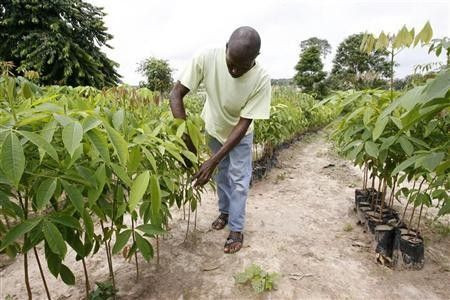Rubber up 4.5 pct since Tuesday on low Thai output, weak US dollar

Rubber recovered most of the losses it suffered on China rate hike fears, partly helped by a broadly weak US dollar and speculative buying interest on the commodity.
The benchmark April futures on Tokyo Commodity Exchange settled Thursday at 369.2 yen per kilogram, 7.1 yen up on the day and nearly 4.5 percent higher from Wednesday's close.
The RSS (Ribbed Smoked Sheet) -3 variety of the commodity, due for delivery in April 2011 had fallen to a low of 345.3 yen per kilogram on Wednesday on worries that China may take steps to curb rising inflation.
China is the world's largest consumer of rubber and the rate hike worries had impacted commodities across the board.
However, market experts estimate China's demand for natural rubber to jump nearly 4 percent to 2.8-3 million tons and its requirement for synthetic rubber to rise around 15 percent to more than 3.5 million tons.
On November 11, Tokyo rubber had soared to a 30-year high of 383 yen on fears heavy rains and floods in Thailand may impact its output.
Thai Concerns
Thailand authorities said bad weather will not lead to fall in output as the rains and floods only hit young trees, a year or two old. However, www.rubberthai.com, a leading source of rubber related news from the country, said in its Wednesday's report that rubber supplies from southern Thailand has reduced following the floods.
Thailand is the world's largest rubber producer. RSS-3 grade rubber had clocked a record of 132 baht the next day in Thailand.
Thai Rubber Association expects natural-rubber output in the country to decline by 10 percent to 870,000 tons in the fourth quarter, cutting total output this year by 5 percent to 3 million tons.
Meanwhile, India government said earlier this week that it has no plans to put a ceiling on maximum price of natural rubber in the wake of a recent spurt in prices following disruption in rubber production due to adverse weather conditions. India is world's fourth largest rubber producer, after Thailand, Indonesia and Malaysia.
The government is of the view that fixation of any maximum price of natural rubber may not be desirable, keeping in view interests of all stakeholders and sustainable existence of the rubber sector as a whole, Minister of Commerce and Industry Anand Sharma told parliament.
© Copyright IBTimes 2024. All rights reserved.





















